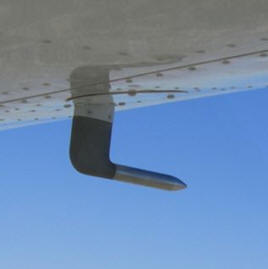 |
|
|
|
|
|
|
|
|
The destabilization that resulted from the climbing
flight path and the evolution in the pitch attitude and
vertical speed was added to the erroneous airspeed
indications and ECAM messages, which did not help with
the diagnosis.
The underlying behavioral hypotheses in classifying the
loss of airspeed information as “major” were not
validated in the context of this accident. The airplane
went into a sustained stall, signaled by the stall
warning and strong buffet. Despite these persistent
symptoms, the crew never understood that they were
stalling and consequently never applied a recovery
maneuver. The combination of the ergonomics of the
warning design, the conditions in which airline pilots
are trained and exposed to stalls during their
professional training and the process of recurrent
training does not generate the expected behavior in any
acceptable reliable way.
In
its current form, recognizing the stall warning, even
associated with buffet, supposes that the crew accords a
minimum level of “legitimacy” to it. This then supposes
sufficient previous experience of stalls, a minimum of
cognitive availability and understanding of the
situation, knowledge of the airplane (and its protection
modes) and its flight physics. An examination of the
current training for airline pilots does not, in
general, provide convincing indications of the building
and maintenance of the associated skills.
More generally, the double failure of the planned
procedural responses shows the limits of the current
safety model. When crew action is expected, it is always
supposed that they will be capable of initial control of
the flight path and of a rapid diagnosis that will allow
them to identify the correct entry in the dictionary of
procedures. A crew can be faced with an unexpected
situation leading to a momentary but profound loss of
comprehension. If, in this case, the supposed capacity
for initial mastery and then diagnosis is lost, the
safety model is then in “common failure mode”. During
this event, the initial inability to master the flight
path also made it impossible to understand the situation
and to access the planned solution.
Thus, the accident resulted from the following
succession of events:
-
Temporary inconsistency between the airspeed
measurements, likely following the obstruction of the
Pitot probes by ice crystals that, in particular, caused
the autopilot disconnection and the reconfiguration to
alternate law;
-
Inappropriate control inputs that destabilized the
flight path;
-
The lack of any link by the crew between the loss of
indicated speeds called out and the appropriate
procedure;
-
The late identification by the PNF of the deviation from
the flight path and the insufficient correction applied
by the PF;
-
The crew not identifying the approach to stall, their
lack of immediate response and the exit from the flight
envelope;
-
The crew’s failure to diagnose the stall situation and
consequently a lack of inputs that would have made it
possible to recover from it. These events can be
explained by a combination of the following factors:
-
The feedback mechanisms on the part of all those
involved that made it impossible: -
To
identify the repeated non-application of the loss of
airspeed information procedure and to remedy this, to
ensure that the risk model for crews in cruise included
icing of the Pitot probes and its consequences;
-
The absence of any training, at high altitude, in manual
airplane handling and in the procedure for ”Vol avec IAS
douteuse”; - Task-sharing that was weakened by: -
Incomprehension of the situation when the autopilot
disconnection occurred, -
Poor management of the startle effect that generated a
highly charged emotional factor for the two copilots;
-
The lack of a clear display in the cockpit of the
airspeed inconsistencies identified by the computers; - The crew not taking into account the stall warning, which could have been due to: - A failure to identify the aural warning, due to low exposure time in training to stall phenomena, stall warnings and buffet, - The appearance at the beginning of the event of transient warnings that could be considered as spurious, - The absence of any visual information to confirm the approach-to-stall after the loss of the limit speeds, - The possible confusion with an over speed situation in which buffet is also considered as a symptom, Flight Director indications that may led the crew to believe that their actions were appropriate, even though they were not, - The difficulty in recognizing and understanding the implications of a reconfiguration in alternate law with no angle of attack protection. |
||||
|
|
||||


